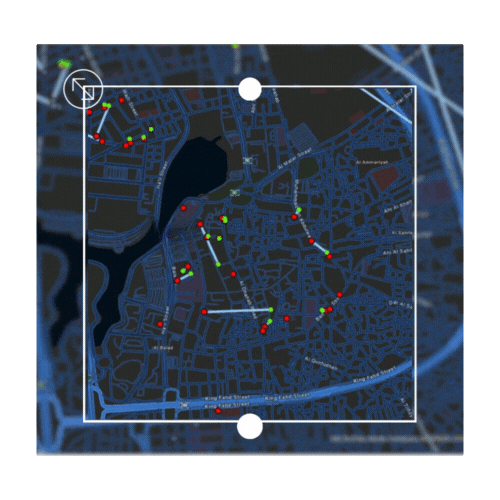Route to Market
Route to Market (RTM) is a strategic framework that optimizes how products reach end customers through efficient distribution channels. It involves data-driven mapping, customer segmentation, and route optimization to enhance market coverage and operational efficiency. By leveraging GIS tools, data matching, and geocoding, businesses streamline delivery networks, reduce inefficiencies, and improve retail execution. Additionally, a comprehensive market scans through Census provide valuable insights that refine RTM strategies, ensuring accurate distribution planning, better resource allocation, and improved market penetration A well-structured RTM strategy ensures cost-effective distribution, better service levels, and sustained business growth..
Data Matching

Data matching is a crucial process where we align our collected census data with the client’s Customer Master File (CMF) to ensure accuracy, integrity, and completeness. This involves validating and rectifying data to correct inconsistencies, identifying gaps between the datasets, and filling in missing information to provide a comprehensive market view. By reconciling records and highlighting discrepancies, we ensure that the client’s database reflects the most accurate and up-to-date market reality. Additionally, this process uncovers untapped opportunities, allowing businesses to identify potential growth areas and enhance their market positioning. Most importantly, this service serves as the main enabler for our clients to leverage our data efficiently, ensuring optimized decision-making and strategic market execution.
Mapping existing data is the foundation of the data matching process, utilizing Geographic Information System (GIS) tools to visualize delivery routes. This enables businesses to:
- Compare and reconcile datasets to eliminate redundancies and enhance data integrity.
- Integrate geocoding services to standardize addresses and assign precise geographical coordinates.
This approach improves data accuracy, supports better decision-making, and optimizes distribution efficiency and is the foundation for routing optimization.
Route Optimization
Offers a comprehensive, research-driven approach to optimizing direct retail distribution through a structured, phased analysis.
- Current Distribution System Analysis - Evaluates existing networks to pinpoint operational gaps.
- Customer Database Management – Cleanses, verifies, and standardizes data for accuracy and improved decision-making.
- Sales Territory & Route Optimization – Segments geographic areas and customers based on demand, visit frequency, and purchasing behavior, ensuring efficient sales and delivery routes.
- Distribution Route Performance Evaluation – Based on time & motion studies, we assess key metrics such as DC locations, travel distances, stops, fuel consumption and time spent within stores to enhance efficiency.
- Route Optimization & Implementation – Evaluates existing networks to pinpoint operational gaps.
By following this comprehensive methodology, businesses can streamline logistics, enhance market execution, and drive sustainable growth.
